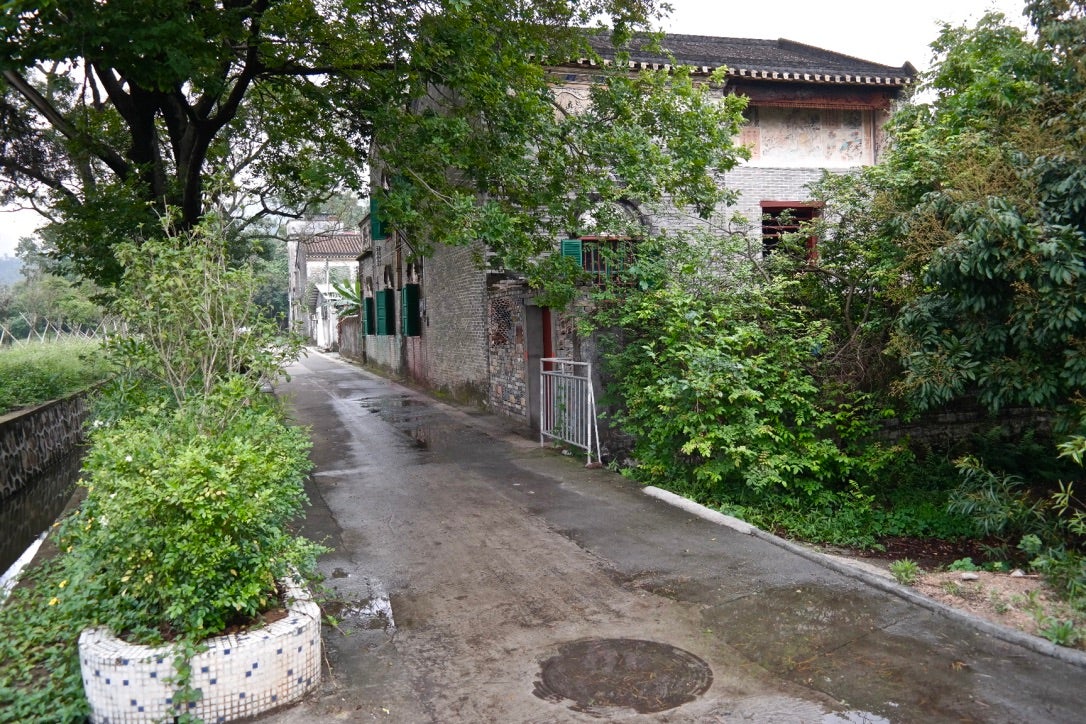
Caobian migrant house, Zhongshan
This house was built in the early 20th century by a Caobian villager (name unknown) who migrated to Australia. Later the descendants of the Australian migrant who built the house migrated to America.
Inside the two-storey house, much of the wooden panelling is covered with beautifully coloured murals which feature auspicious symbols and plants as well as landscape scenes and scenes of early 20th century life in Zhongshan. One of these scenes shows a bus that is identical to the buses used for the bus service on the Zhongshan-Macao road which was opened in the 1930s. A 1930s brochure for the bus service is preserved in the Zhongshan Commercial Museum.
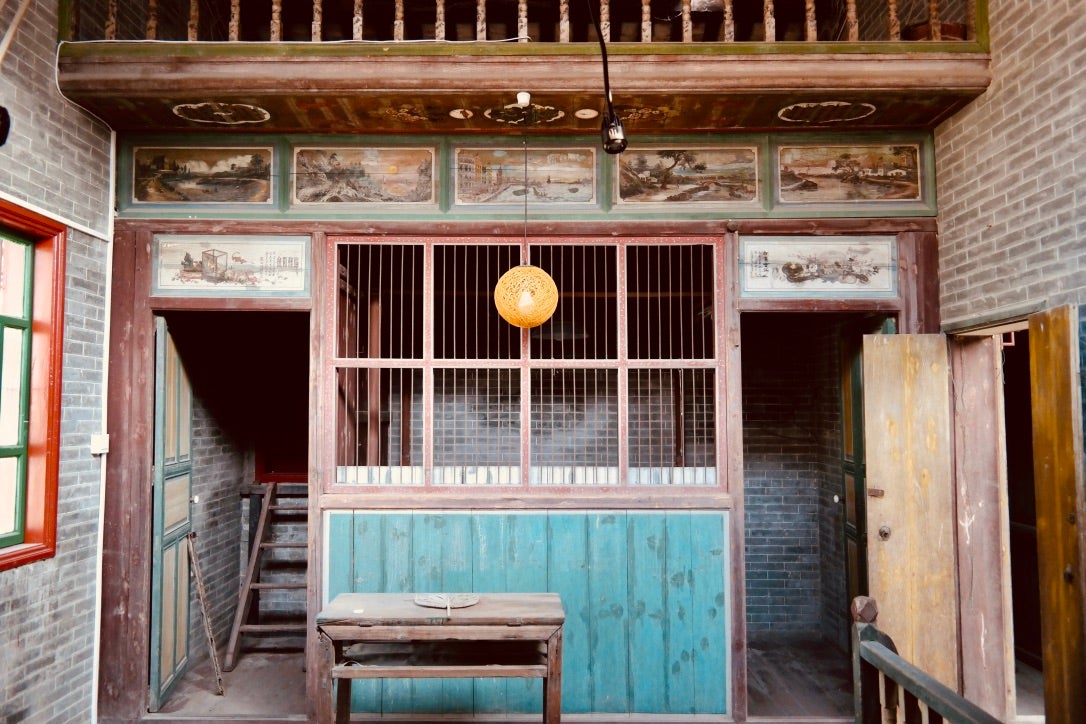
Ground floor screen wall opposite the entrance door of the house
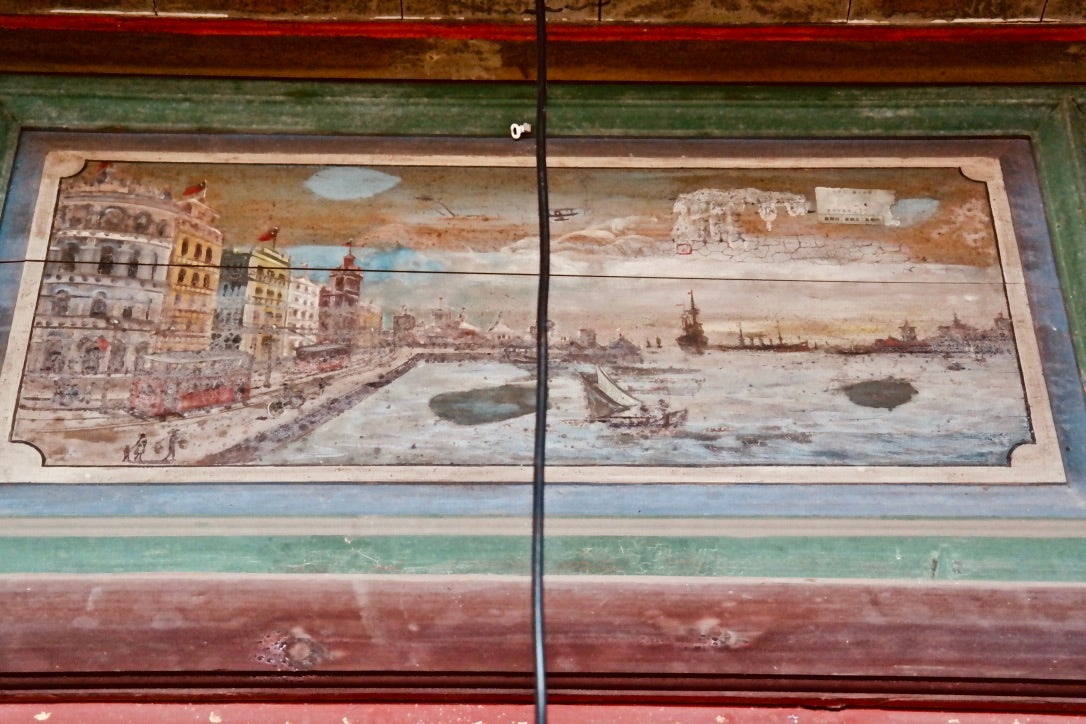
Picture on the central panel of the ground floor screen wall
One of the upstairs rooms has a built-in bed which features an openwork wooden screen around the top of the bed cavity. The wooden floor of the room is painted with blue and white check pattern that resembles a pattern commonly made with linoleum or ceramics floor tiles. Some of the upstairs windows slide open on steel rails. On the lower level, the floor consists of large terracotta tiles laid on a concrete base.

Bed niche on the first floor
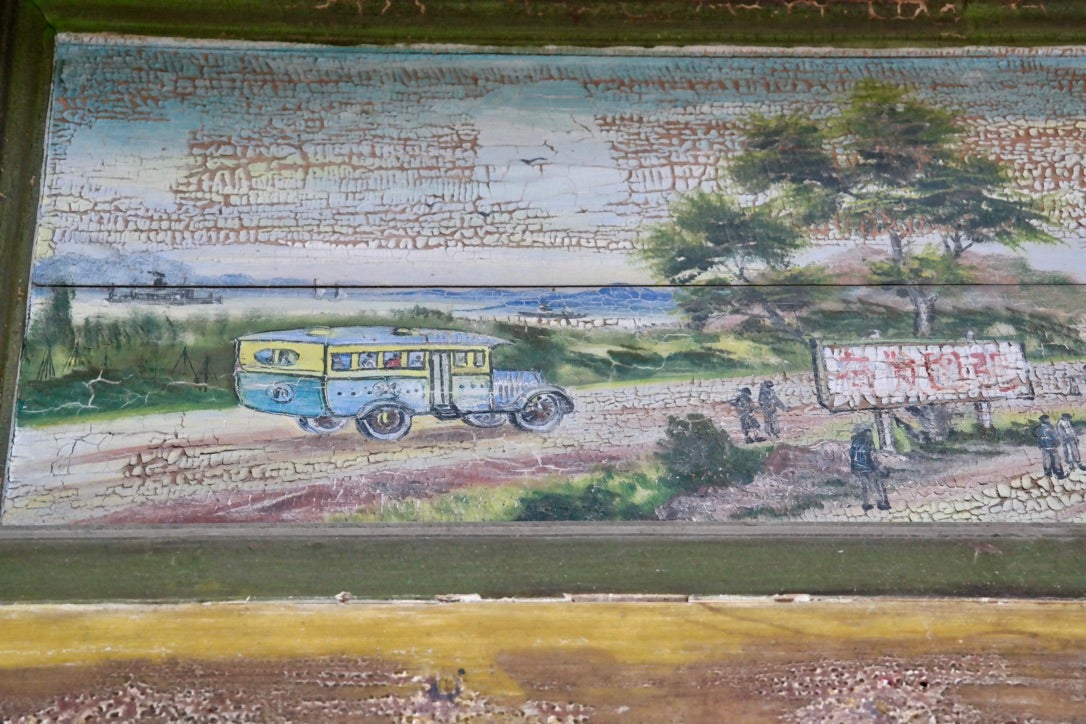
Picture of a bus on the central panel above the bed niche
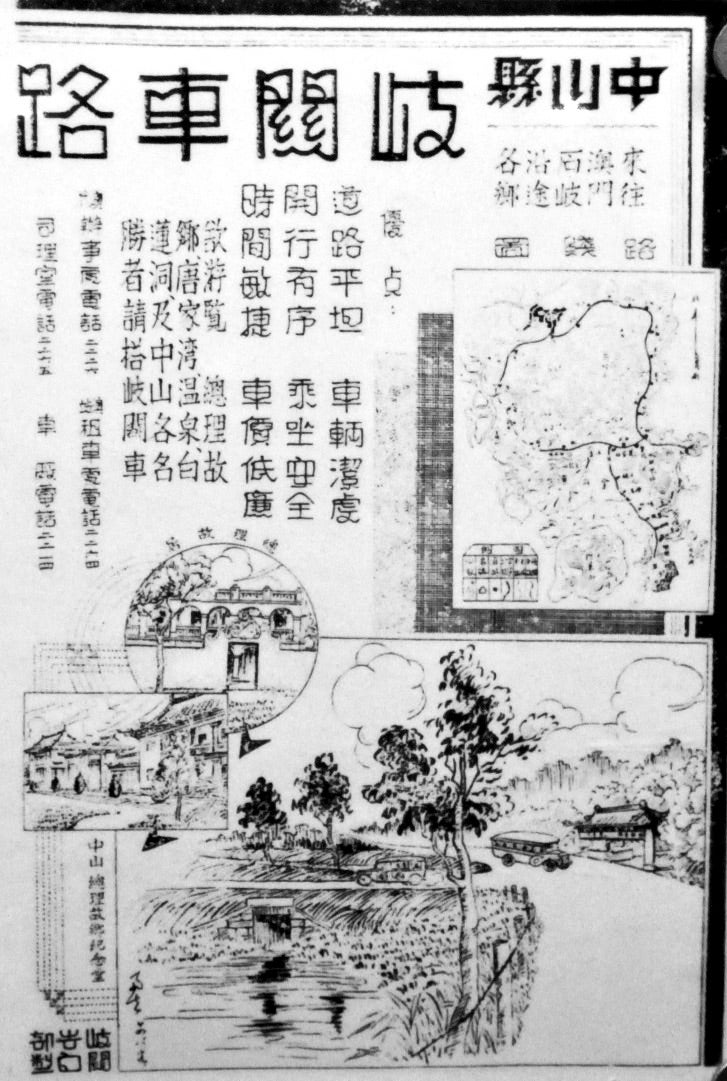
Early 20th poster for a bus service in Zhongshan (image courtesy of the Zhongshan Commercial Museum)
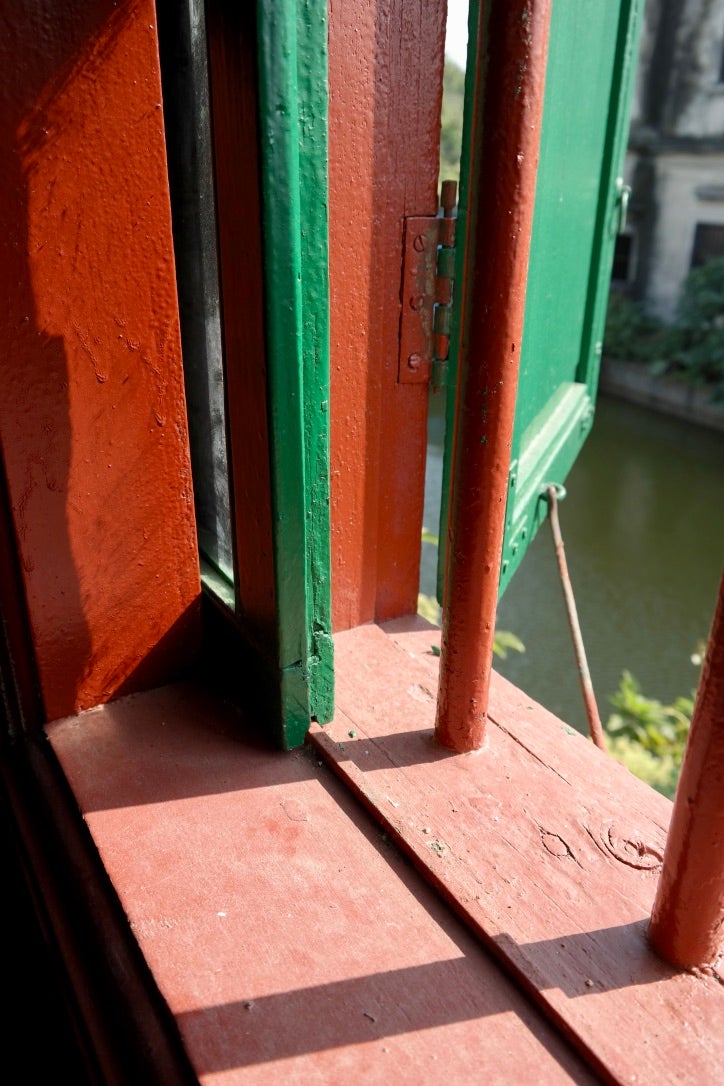
A first floor window, showing the steel rail on which the window slides

A cabinet in the first floor bedroom (note the painted chequer pattern on the floor)
This house is typical of other two storey houses built in the villages of Zhongshan from around the 1910 -30s with remittance funds from Australia and elsewhere.
The house has been vacant for a number of years and is registered as a heritage property by the Zhongshan prefectural government. Village officials have recently carried out some cleaning and repairs in the house’s interior and have installed electric lights. While the window frames have been repainted, inside and out, the painted wooden panels and other interior woodwork has been left untouched.
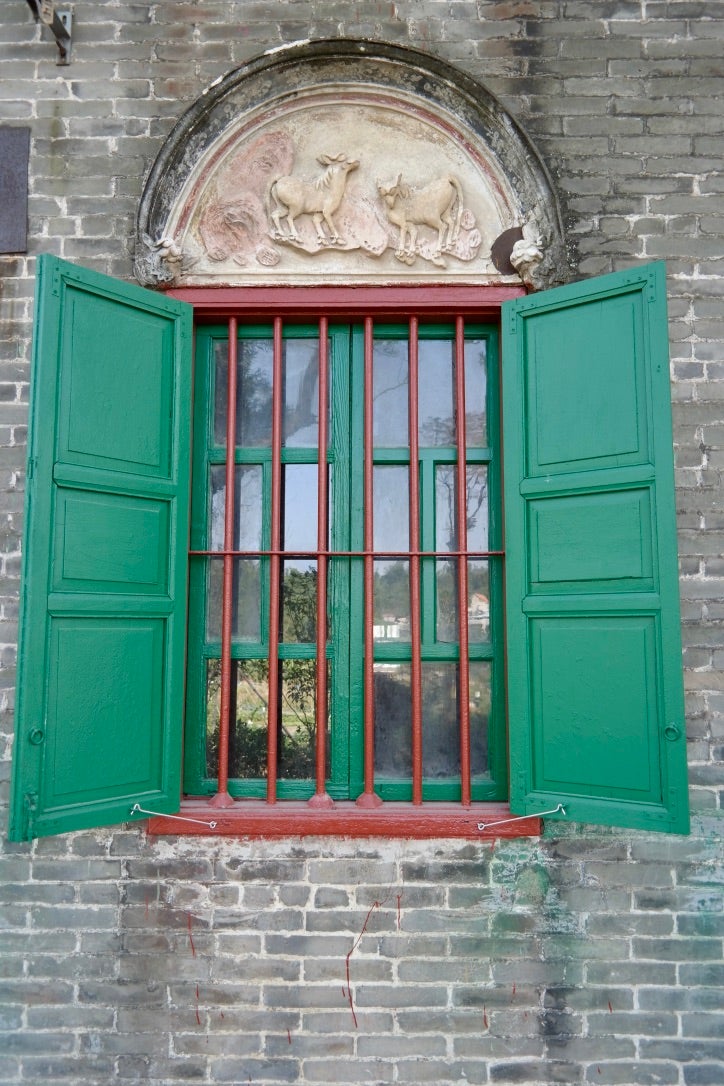
Window (the window frame, shutters and bars have recently been repainted
